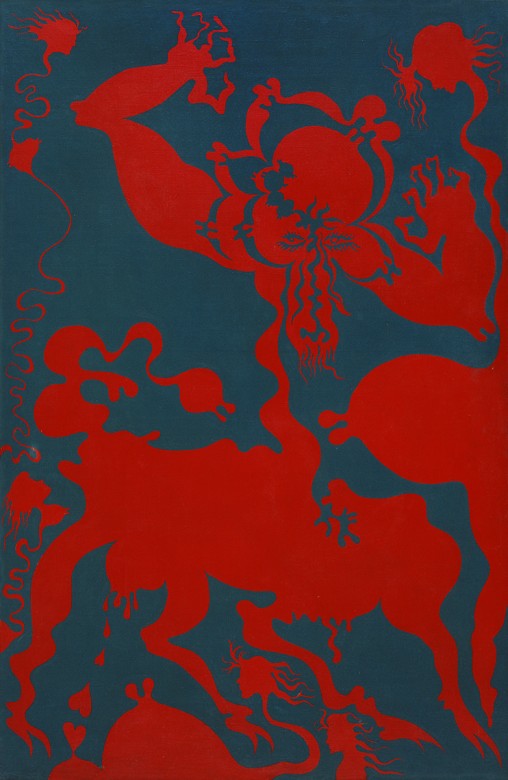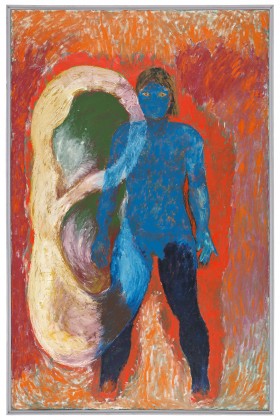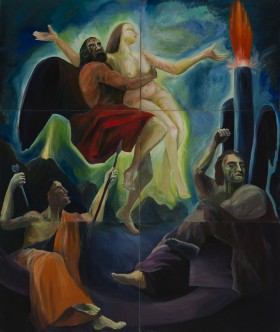Voracious Woman
- type of object: painting
- date: 1970
- material/technique: oil on canvas
- dimensions: 137 x 87,5 cm
- inventory No.: M-55
- image licensed under: CC BY-NC-ND 3.0
Jan Dobkowski rejected textural solutions stemming from post-impressionism while he was still studying. He eliminated the painterly space from the painting, filling the surface of the canvas with large flat fields of lightly applied colour. He limited the colour range to two contrasting complementary colours — red and green — which he considered to be the colours of life. The line outlining the shapes flows in restless, meandering turns, creating Art Deco-like decorative arrangements. Despite deformation and exaggeration of forms, the paintings are subjective rather than abstract. The repertoire of repeating motifs includes, among others, multiplied breasts with heavily marked nipples, heads with strands of hair resembling flames, human skeletons, hearts, sperm, and embryonic shapes. The human form is not superior to other elements of the compositions — all the organisms remain equal and mutually entangled. The hierarchical division into the human and the non-human is abolished.
The painting Voracious Woman shows an animal-human creature with wide-spread arms with splayed fingers. Its head is constructed out of eyes surrounded by a wreath of multiplied breasts. The forms seem to flow one into another, which gives the impression of being frozen in dynamic motion. Arrangements of soft shapes express symbolic content: an elemental wonder of life and a sense of oneness with nature constantly undergoing change. The artist himself claimed that for him, nature is ‘. . . a matter of space, a certain consistency of the world — it is earth and air, clouds, fire and water, it is the constant transformation of nature. People long to open their eyes to the sun and sky, to breathe in the scent of the earth. Because it is Nature that gives us the feeling that we exist. I believed that there was a reservoir in naturalness that could make my art alive. That is why, first and foremost, I tried to show humanity in my paintings. Humanity stripped of all attributes of culture or civilisation, woman and man in their age-old gestures. Through eroticism, I wanted to show how strongly humans desire nature and that it is good’.
Ewa Skolimowska, translated by Pailina Bożek
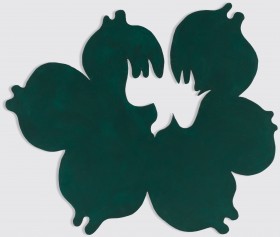 from the series Prolongation of Summer V1969
from the series Prolongation of Summer V1969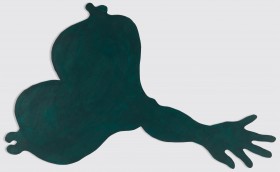 from the series Prolongation of Summer VI1969
from the series Prolongation of Summer VI1969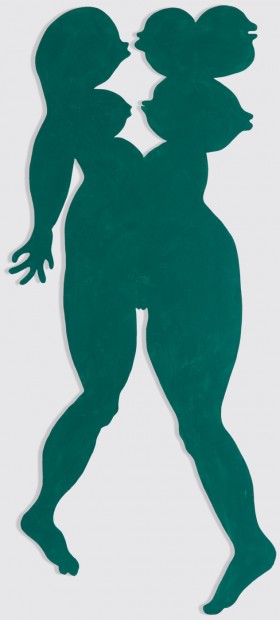 from the series Prolongation of Summer VII1969
from the series Prolongation of Summer VII1969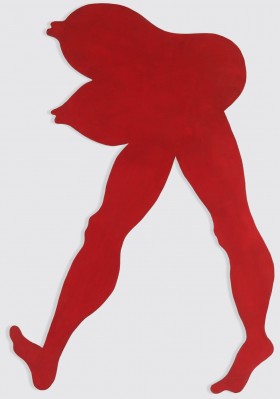 from the series Prolongation of Summer VIII1969
from the series Prolongation of Summer VIII1969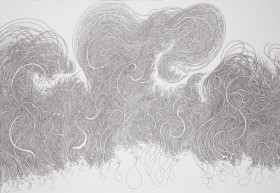 When the Wind Blows1975
When the Wind Blows1975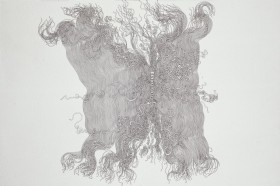 Ghost1975
Ghost1975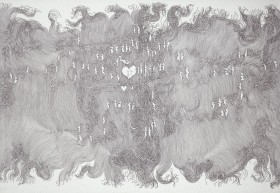 Aquarium1975
Aquarium1975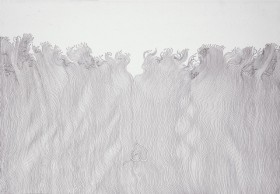 1976
1976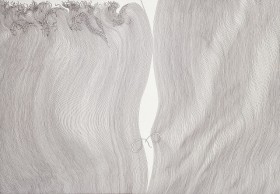 Attempted Contact1976
Attempted Contact1976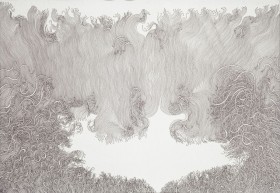 Abyss1976
Abyss1976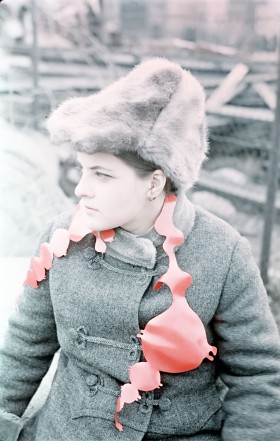 Omnipresent, open air action with the participation of Maria Dobkowska1969
Omnipresent, open air action with the participation of Maria Dobkowska1969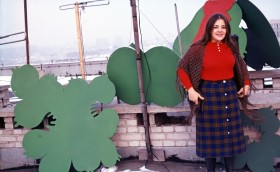 Prolongation of Summer, action on the roof of the artist’s studio on Chłodna Street, Warsaw1969
Prolongation of Summer, action on the roof of the artist’s studio on Chłodna Street, Warsaw1969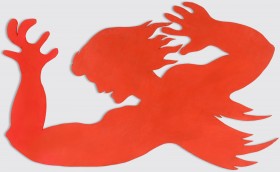 from the series Prolongation of Summer IV1969
from the series Prolongation of Summer IV1969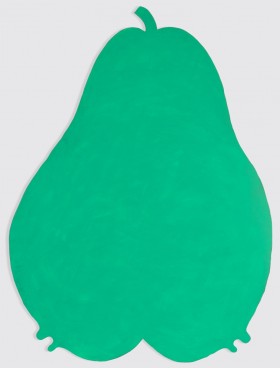 from the series Prolongation of Summer II1969
from the series Prolongation of Summer II1969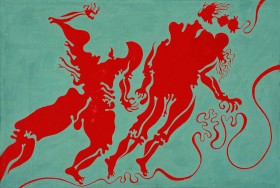 Blind leading the blind1970
Blind leading the blind1970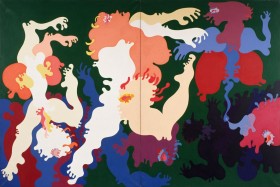 Euphoria1973
Euphoria1973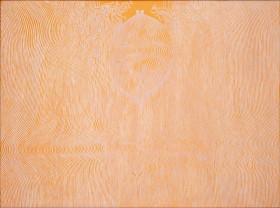 A Great Day 1980
A Great Day 1980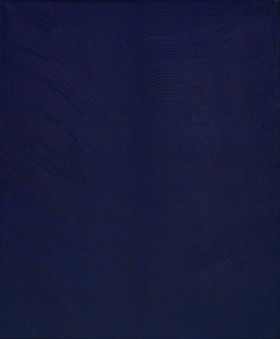 My River II1980
My River II1980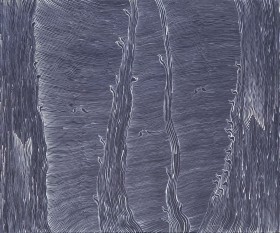 The Trees of Jan D. 1980
The Trees of Jan D. 1980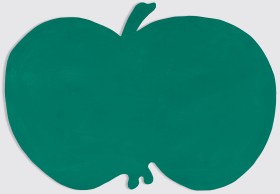 from the series Prolongation of Summer I1969
from the series Prolongation of Summer I1969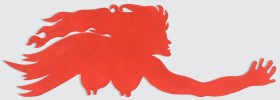 from the series Prolongation of Summer III1969
from the series Prolongation of Summer III1969
